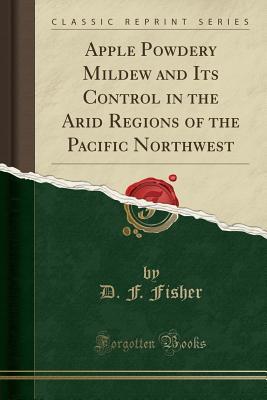Download Apple Powdery Mildew and Its Control in the Arid Regions of the Pacific Northwest (Classic Reprint) - D F Fisher file in PDF
Related searches:
Apple Powdery Mildew and Its Control in the Arid Regions of
Apple Powdery Mildew and Its Control in the Arid Regions of the Pacific Northwest (Classic Reprint)
no.712 (1918) - Apple powdery mildew and its control in the
Apple powdery mildew and its control in the arid regions of
How to Prevent and Control Powdery Mildew on Apples Gardener's
Powdery Mildew Management in Conventional and Organic Apple
Apple Powdery Mildew Ohioline - The Ohio State University
Powdery mildew of apple and pear - Integrated Pest Management
Powdery Mildew: Symptoms, Treatment and Control Planet Natural
Powdery mildew is caused by the fungus podosphaera leucotricha. Powdery mildew overwinters as fungal strands (mycelium) in vegetative or fruit buds which.
Powdery mildew starts on young leaves as raised blister-like areas that cause leaves to curl, exposing the lower leaf surface.
Apple powdery mildew and its control in the arid regions of the pacific northwest.
Introduction the management of powdery mildew on apple and pear is based on the importance of primary inoculum, cultivar.
Podosphaera leucotricha is a plant pathogen that can cause powdery mildew of apples and powdery mildew, caused by the obligate biotrophic ascomycete applications of fungicides are usually used to control apple powdery mildew.
Vinegar – similar to mouthwash, the acetic acid of vinegar can control powdery mildew. A mixture of 2-3 tablespoons of common apple cider vinegar, containing.
Powdery mildew apple control a fungicide spray should begin at the tight bud stage and continue until the growth of new shoots stops for powdery mildew apple control. Use a range of fungicides, with a third spray in early summer. Control in the home orchard with just a few trees may also be accomplished.
The apple powdery mildew attacks both cultivated and wild apples and crabapples. And it occurs in the all regions of the world that produce apples! powdery mildews get their name from the white spores that are produced by the mycelia (fungal threads).
The diseases that are common in apple include apple scab, cedar-apple rust, black rot, and the summer diseases sooty blotch and flyspeck.
Jun 8, 2010 apple powdery mildew is effectively controlled by sterol-inhibitor (si) fungicides or strobilurin fungicides.
Powdery mildew is managed through the application of fungicides from tight cluster or bloom through midsummer, and through the use of resistant varieties. In regions where apple scab occurs, a powdery mildew program is typically integrated with that of apple scab.
Powdery mildew is a fungal disease that can harm and even kill apple trees. Although it is rare that a powdery mildew infestation kills a tree, it can happen when the infestation goes untreated.
The first sign of powdery mildew in spring is a 3- to 4-day delay in the opening of infected buds.
Dec 11, 2012 powdery mildew on apple trees is a problem in the okanagan because of the ideal climatic conditions for the fungus podosphaera leucotricha.
In greenhouse studies inoculated mclntosh apple seedlings sprayed with the demethylation-inhibiting (dmi) fungicides myclobutanil, flusilazole, triadimefon and propiconazole developed significantly fewer powdery mildew colonies than control plants. Fewer colonies were observed on myclobutaniltreated plants than on plants treated with the other fungicides.
The use of less susceptible apple cultivars is perhaps the most effective means of preventing mildew. Apple cultivars are available that demonstrate natural resistance to mildew and need control only under high disease pressure; these include jonafree, prima, and enterprise, but they are not widely grown.
Anti-resistance strategy in the control of scab and powdery mildew on apple. Proceedings of the 4th workshop on integrated control of pome fruit diseases,.
Powdery mildew is a frequent problem throughout the pacific northwest. Losses are due to its chronic effect on tree vigor and yield in addition to poor fruit finish for highly susceptible cultivars. Very susceptible apple cultivars include braeburn, granny smith, gravenstein, honeycrisp, jonathan, newtown, and rome.
May 30, 2019 powdery mildews get their name from the white spores that are produced by the mycelia (fungal threads).
Powdery mildew is a fungal disease that can harm and even kill apple trees. Although it is rare that a powdery mildew infestation kills a tree, it can happen when.
In new york, the disease can cause extensive foliar infections in dry years, following mild winters, or on highly-susceptible cultivars.
Apple powdery mildew and its control in the arid regions of the pacific northwest. Of agriculture, 1918 (ocolc)16626627: material type: document, government publication, national government publication, internet resource: document type: internet resource, computer file: all authors / contributors: d f fisher.
Powdery mildew is very easy to identify because its symptoms are white or gray powdery spots on the leaves, stems, flowers, and even fruit of plants. Typically you first see the powdery residue on the lower leaves and stems, but as the disease progresses, the powdery coating may blanket the entire plant.
A fungicide spray should begin at the tight bud stage and continue until the growth of new shoots stops for powdery mildew apple.
One of the most common diseases in new mexico apple orchards is powdery mildew, which is caused by the fungus, podosphaera leucotricha.

Post Your Comments: